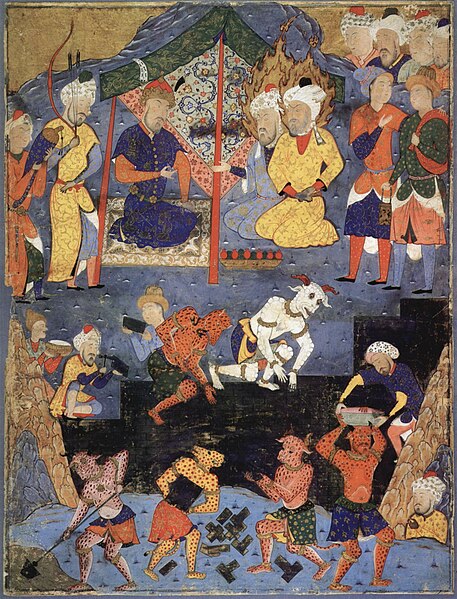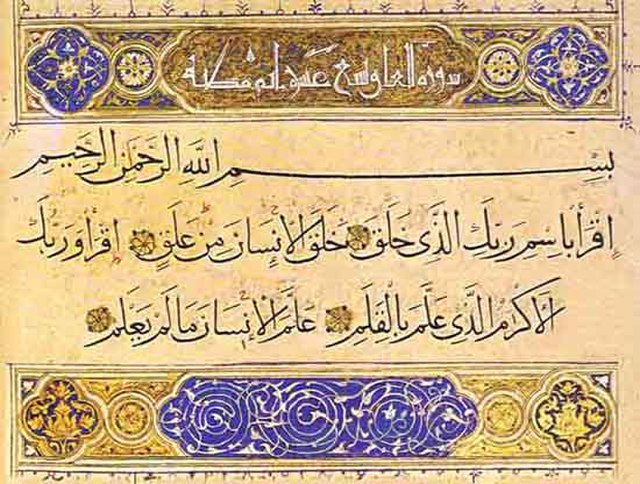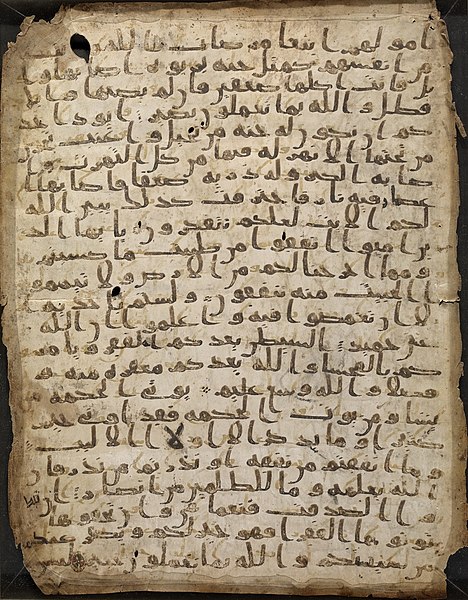Dhu al-Qarnayn, appears in the Quran, Surah al-Kahf (18), Ayahs 83–101 as one who travels to east and west and sets up a barrier between a certain people and Gog and Magog. Elsewhere, the Quran tells how the end of the world will be signaled by the release of Gog and Magog from behind the barrier. Other apocalyptic writings predict that their destruction by God in a single night will usher in the Day of Resurrection.
Dhu al-Qarnayn building a wall with the help of the jinns to keep away Gog and Magog. Persian miniature from a book of Falnama copied for the Safavid emperor Tahmasp I (r. 1524–1576), currently preserved in the Chester Beatty Library, Dublin.
The Caspian Gates in Derbent, Russia, part of the defence systems built by the Sasanian Empire, often identified with the Gates of Alexander.
Silver tetradrachm of Alexander the Great shown wearing the horns of the ram-god Zeus-Ammon.
Image: Cyrus Great
The Quran, also romanized Qur'an or Koran, is the central religious text of Islam, believed by Muslims to be a revelation from God. It is organized in 114 chapters which consist of individual verses. Besides its religious significance, it is widely regarded as the finest work in Arabic literature, and has significantly influenced the Arabic language.
Two folios of the Birmingham Quran manuscript, an early manuscript written in Hijazi script likely dated within Muhammad's lifetime between c. 568–645
Traditionally believed to be Muhammad's first revelation, Surah Al-Alaq, later placed 96th in the Qur'anic regulations, in current writing style
Quran − in Mashhad, Iran − said to be written by Ali
A page from the Stanford '07 binary manuscript contains verses 265-271 of Surah Al-Baqara; the double layer reveals additions to the original text and differences with today's Quran








